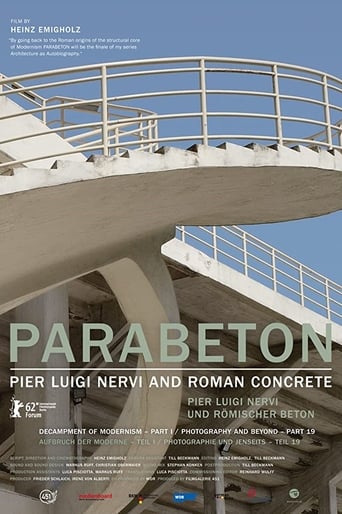The third autobiography in the series deals with modern architecture. For the grand finale, he covers a broad historical spectrum: Parabeton tells of the great Roman concrete buildings from the start of the Common Era and compares them with Pier Luigi Nervi’s work, the Italian master of concrete construction. As concrete can be made into many different shapes, the buildings and the domes, slopes and spiral staircases they contain have an innovative, seminal quality. Those familiar with Emigholz's work will note that the skewed camera angles used in the past are replaced by straight-on views. Moreover, the ancient constructions seem more dynamic than those of the last century. Almost devoid of people, the images we know from his preceding films make the ruins from the 1930s to the 70s, the familiar cement constructions of daily life with their play of light and shadow or even the Pope’s Audience Hall appear more ghostly than the famous sights of the ancient world.

